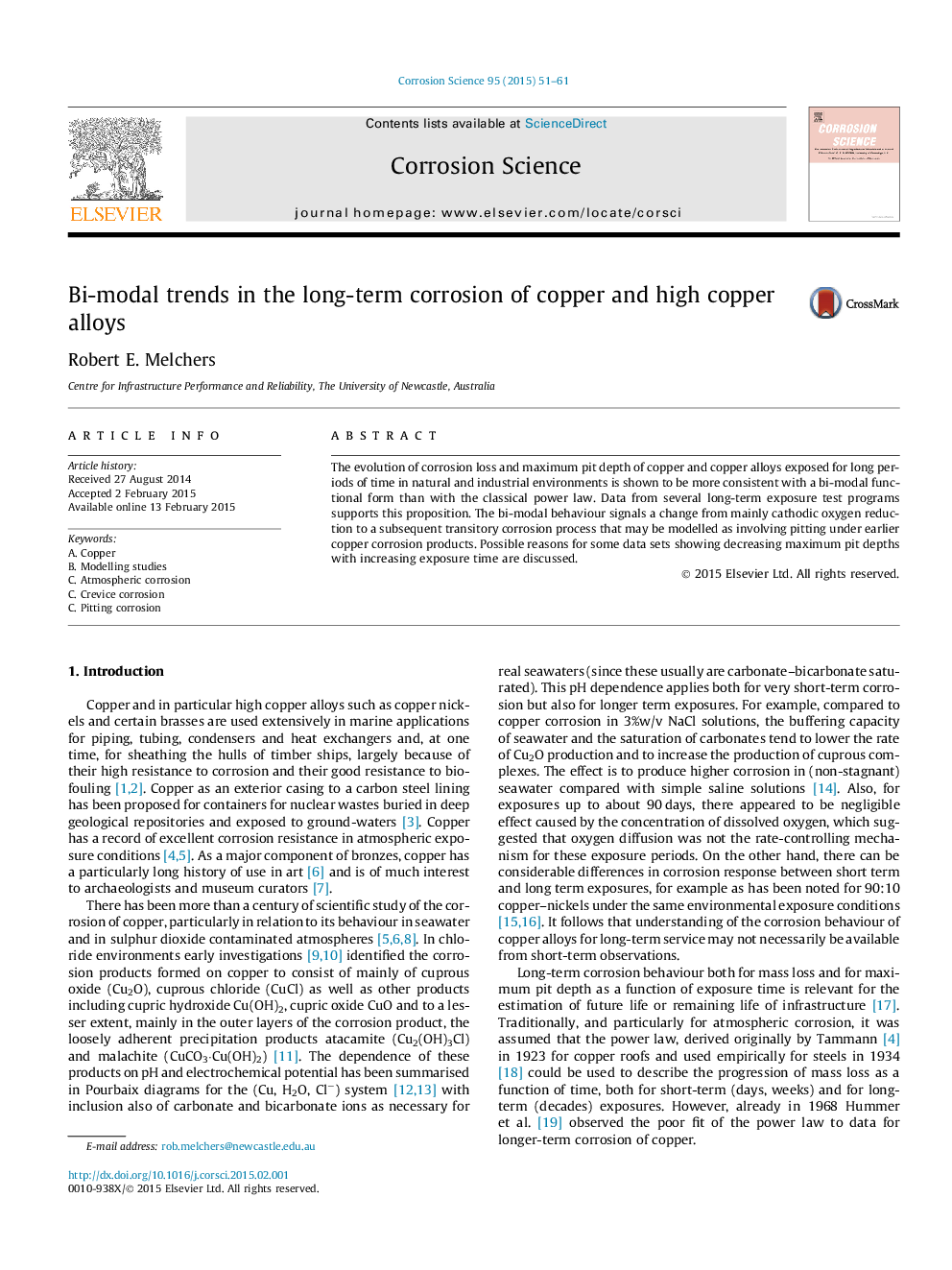| Article ID | Journal | Published Year | Pages | File Type |
|---|---|---|---|---|
| 1468559 | Corrosion Science | 2015 | 11 Pages |
•Long-term corrosion of copper and copper alloys usually shows a bi-modal trend.•The bi-modal trend applies for immersion, tidal, atmospheric and industrial exposures.•For pure copper the bi-modal trend is a function of electrolyte chloride content.•Reverse crevice corrosion may be responsible for reducing maximum depths of pits.
The evolution of corrosion loss and maximum pit depth of copper and copper alloys exposed for long periods of time in natural and industrial environments is shown to be more consistent with a bi-modal functional form than with the classical power law. Data from several long-term exposure test programs supports this proposition. The bi-modal behaviour signals a change from mainly cathodic oxygen reduction to a subsequent transitory corrosion process that may be modelled as involving pitting under earlier copper corrosion products. Possible reasons for some data sets showing decreasing maximum pit depths with increasing exposure time are discussed.
